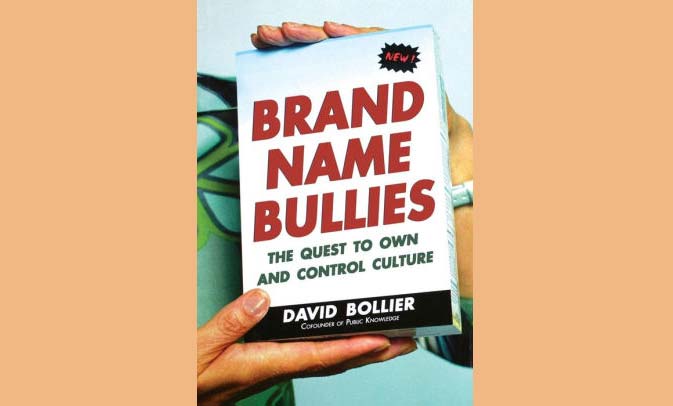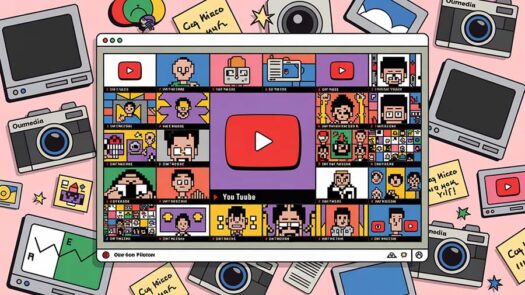Title: “Brand Name Bullies″
Author: Peter Bollier
My rating: ☆☆☆☆☆
Release date: Jan. 1, 2005
For the past few years, intellectual property law has been the playground of lawyers, geeks and scholars. Now comes David Bollier to explain why this seemingly arcane field should matter to the rest of us.
In “Brand Name Bullies: The Quest to Own and Control Culture (Wiley & Sons),″ released this month on Amazon, the author of Silent Theft: The Private Plunder of Our Common Wealth is back with a painfully comic look at how big corporations are bullying the little guy and locking down culture with the backing of one-sided copyright, patent and trademark laws.
Bollier, a co-founder of the public interest group Public Knowledge, has written a darkly funny, accessible account of horror stories and outrages both large and small. A few years back, the American Society of Composers, Authors and Publishers send out letters to 288 camps in the American Camping Association, demanding that Brownies and Girl Scouts stop singing copyrighted songs like “Blowin’ in the Wind” or “Row, Row, Row” unless the camping groups ponied over thousands of dollars in licensing fees.
The press had a field day with the story. Pro basketball player Shaquille O’Neal offers to pay a camp’s royalties for 10 years. BMI offered to license its 3 million songs to the Girl Scouts for nothing. Duly chastened, ASCAP backed down.
Some of these issues — such as mash-ups, fan fiction, The Grey Album or the Eldred decision — will be familiar to those who have followed the recent shenanigans in IP law. (Indeed, as I write this review, I’m listening to John Coltrane’s My Favorite Things — a melody that would be outlawed had it been recorded today.) But Bollier’s chief purpose here is to introduce these stories to a wider audience. Few of the tales have the happy ending that the Girl Scouts enjoyed.
For example, remember how a zillion TV stations used to air Frank Capra’s It’s a Wonderful Life around the holidays? That was before Spelling Entertainment entered the picture. Even though the film’s copyright owner failed to renew the copyright on the film, Spelling argued that the film remained under copyright because the short story that was the basis for the film and its musical score were still under copyright protection, and so the film had not entered the public domain after all! Spelling warned broadcast stations that they risked legal action if they aired the Jimmy Stewart classic without permission – and payment.
The book brims with such tales. In 1998 Fruit of the Loom threatened a Web parodist for suggesting alternative names for the underwear, such as “Fruit of the Loins” and “Banana in my Briefs.” Bollier describes how the power of many forced the company to retreat:
Rather than capitulate to Fruit of the Loom’s intimidation, Styn fought back. Within forty-eight hours he had contacted more than a hundred independent Web publishers who pledged to support his cause. Banner ads reading “Freedom of speech doesn’t end at an elastic waistband—Support your right to be funny” and “Rotten Fruit” images appears on hundreds of Web sites, along with links to the Prehensile Tales site.
Styn estimates that fewer than 1,500 people had seen the “Meat of the Loom” parody in the eight months it had been posted online. But within two weeks after he launched his Web crusade against Fruit of the Loom, more than 250,000 visitors had check out www.prehensile.com.
Journalists have a stake in a more open culture as well. The rise of the Internet and grassroots media means that more Web outlets will be able to report from pro sports arenas. But will they be able to post photos or game scores in real time? Not if the pro leagues and owners succeed in their lockdown strategies.
What to do about all this? Bollier proposes “a new language of the commons.” He writes:
At bottom, the challenge is not just to shore up the boundaries of fair use, the public domain, and other public rights, important as those rights are. What is truly needed is a new discourse that can escape the restrictive intellectual categories of copyright and trademark law. …
By getting beyond property-speak, in which everything must be strictly owned by an individual or corporation, the commons identifies the shared cultural spaces that are increasingly important. Who owns the Internet? Who owns online knowledge? Who owns words, letters, and smells? Who owns the fictional characters of mass culture? Rather than granting fair use exceptions to the default norm of property ownership (on a parsimonious, case-by-case basis!), the commons reverses the terms of debate. It asserts that many cultural and creative intangibles presumptively belong to all of us, and that a strong case must be made before exclusive rights to privatize them are granted. In this way the commons provides a more muscular, effective articulation of the public domain.
There is no better description of the problem or the solution.





